#intel technology
Text
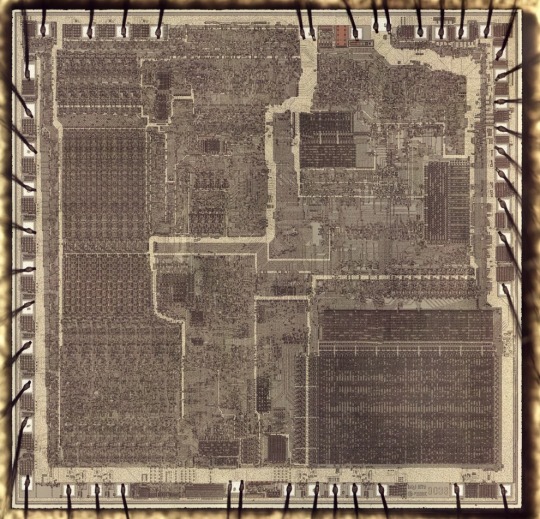
Picture of the die of Intel 8086, which was released all the way back in 1978, started the x86 architecture that still domintes the computer industry today.
139 notes
·
View notes
Text

Intel Pentium ad, December 1996
85 notes
·
View notes
Text
Much like how Apple is highly complicit in Israeli apartheid and genocide against Palestinians, Samsung has also shown themselves to be actively complicit in apartheid and genocide.



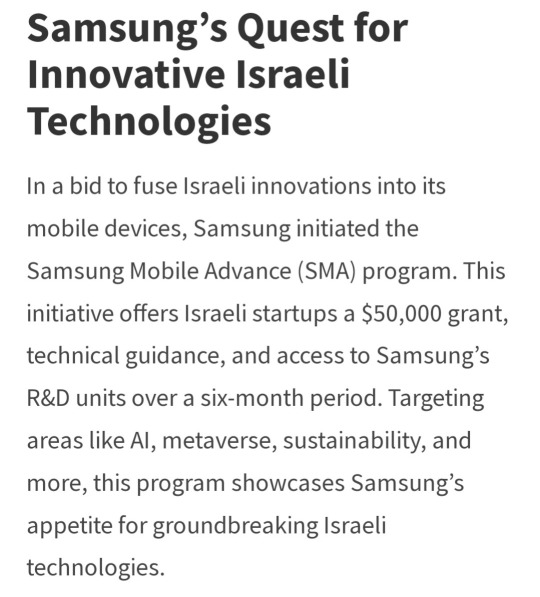
It seems like ALL the major tech companies are actively supporting apartheid and genocide through investing in a settler colonial regime that is actively imposing apartheid on the people the regime is colonizing and comitting genocide against said people.
Boycott Apple, Boycott Samsung, Boycott HP, Boycott Intel, Boycott Dell, and Boycott ANY major tech company that is still going to be complicit in apartheid and genocide.
Free Palestine! Free Congo!
Boycott, Divest, and Sanction ANY and ALL companies that are actively complicit in apartheid Israel's genocide against the Palestinian people.
#boycott samsung#boycott apple#boycott intel#boycott hp#boycott dell#boycott technology#boycott israel#free palestine 🇵🇸#free palestine#israel is a terrorist state#death to israel#free congo#palestine#free gaza#boycott apartheid#boycott zionists#boycott divest sanction#from the river to the sea 🇵🇸#from the river to the sea palestine will be free#i stand with palestine 🇵🇸#palestina libre#glory to palestine
32 notes
·
View notes
Text
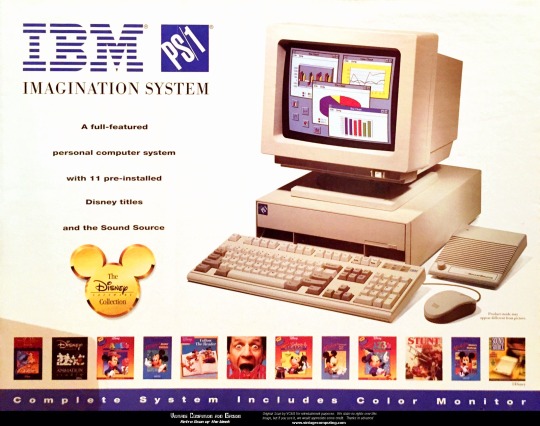


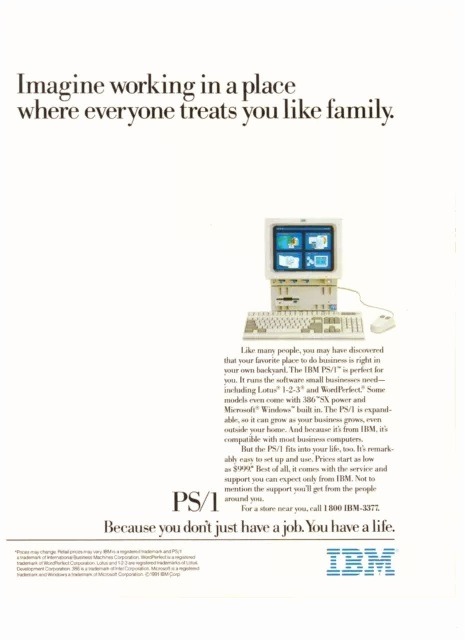
🇺🇲 Step back in time and explore the fascinating journey of the IBM PS/1—a pioneering computer that revolutionized personal computing in the late 1980s and early 1990s!
💻 The IBM PS/1, short for Personal System/1, marked a significant milestone in the evolution of home computing. Launched by IBM in 1990, this innovative machine was designed to bring the power and versatility of IBM's business computers into the homes of consumers.
💾 With its sleek and compact design, the IBM PS/1 was a departure from the bulky and intimidating computers of the past. It featured a built-in monitor, keyboard, and mouse, making it a convenient all-in-one solution for home users.
⚙️ Under the hood, the IBM PS/1 boasted impressive specifications for its time, including an Intel 80286 or 80386 processor, up to 16MB of RAM, and a variety of storage options ranging from floppy disks to hard drives. This formidable hardware allowed users to run productivity software, play games, and explore the emerging world of multimedia with ease.
💡 One of the most notable features of the IBM PS/1 was its user-friendly interface, which made it accessible to users of all skill levels. With its intuitive graphical user interface and pre-installed software, including IBM's own software suite and educational programs, the IBM PS/1 opened up new possibilities for home computing.
📈 Despite facing stiff competition from other manufacturers, the IBM PS/1 enjoyed moderate success and helped pave the way for the widespread adoption of personal computers in homes around the world. Its influence can still be felt today in the countless households that rely on computers for work, entertainment, and communication.
🚀 The IBM PS/1 may have been a product of its time, but its legacy lives on as a testament to the transformative power of technology. As we continue to push the boundaries of computing, let us not forget the humble beginnings of the IBM PS/1 and the role it played in shaping the digital world we know today.
#old technology#techtime chronicles#companies#tech#technology#old tech#technews#information technology#corporations#electronics#ibm pc1#ibm pc#ibm#ibm corporation#computer science#computing#computers#made in america#made in usa#intel 80286#intel#intel 80386#hardware#software#software development#computer#floppy disk#innovation#information#user interface
24 notes
·
View notes
Text
Holy crap how many companies support Israel
And you know what's the worst? I have an office building, it has an "Intel" graphics card...
I also use Google because, unfortunately, many portals are connected to it
It's irritating that so many companies support Israel...
#free palestine#palestine#gaza strip#gazaunderattack#free gaza#gaza#gaza genocide#palestinian genocide#al shifa hospital#fuck israel#isrtm starter#israhell#isreal#israel#israel is a terrorist state#disney#fuck disney#anti disney#intel#laptop#technology#google#internet#search
27 notes
·
View notes
Text
#israel#boycott israel#intel#current events#world news#palestine#free palestine#save gaza#gaza#save palestine#free gaza#multinational corporations#computer#technology
8 notes
·
View notes
Text
Dominate the Battlefield: Intel Battlemage GPUs Revealed

Intel Arc GPU
After releasing its first-generation Arc Alchemist GPUs in 2022, Intel now seems to be on a two-year cadence, as seen by the appearance of the Battlemage in a shipping manifest. This suggests that Battlemage GPUs are being supplied to Intel’s partners for testing, as it’s the first time they’ve seen any proof of them existing in the real world. Intel is probably getting ready for a launch later this year given the timing of this.
Two Battlemage GPUs are being shipped by Intel to its partners, per a recently discovered shipment manifest that was published on X. The GPUs’ designations, G10 and G21, suggest Intel is taking a similar approach as Alchemist, offering one SKU that is more or less high-end for “mainstream” gamers and one that is less expensive.
Intel Arc Graphics Cards
As you may remember, Intel had previously announced plans to launch four GPUs in the Alchemist family:
Intel Arc A380
The A380, A580, A750, and A770. However, only the latter two were officially announced. They anticipate that the A750 and A770, which Intel most likely delivers at launch for midrange gamers, will be replaced by the G10.
They’ve never heard of cards being “in the wild,” but two Battlemage GPUs have shown up in the Si Soft benchmark database before. The fact that both of those cards have 12GB of VRAM stood out as particularly noteworthy. This suggests that Intel increased their base-level allowance from 8GB, which is a wise decision in 2024. As stated by Intel’s CEO earlier this year, Battlemage was “in the labs” in January.
Intel Arc A770
A previously released roadmap from Intel indicates that the G10 is a 150W component and the G21 is 225W. It is anticipated that Intel will reveal notable improvements in Battlemage’s AI capabilities, greater upscaling performance, and ray tracing performance. As 225W GPUs were the previous A750 and A770, it seems Battlemage will follow the script when it comes to its efficiency goals. The business has previously declared that it wishes to aim for this “sweet spot” in terms of power consumption, wherein one PCIe power cable is needed rather than two (or three).
While the industry as a whole is anxious to see how competitive Intel will be with its second bite at the apple, gamers aren’t exactly waiting impatiently for Intel to introduce its GPUs like they do with Nvidia or AMD’s next-gen. Even if the company’s Alchemist GPUs were hard to suggest when they first came out, significant performance advancements have been made possible by the company’s drivers.
The Intel Battlemage G10 and G21 next-generation discrete GPUs, which have been observed in shipment manifests, are anticipated to tackle entry into the mid-range market.
They already know from the horse’s mouth that Intel is working on its next generation of discrete graphics processors, which it has revealed are being code-named Battlemage. The company is developing at least two graphics processing units, according to shipping excerpts.
Intel Battlemage GPUs
The shipping manifest fragments reveal that Intel is working on several GPUs specifically for the Battlemage G10 and G21 versions. The newest versions in Intel’s graphics processor lineup include the ACM-G11, an entry-level graphics processor, and the ACM-G10, a midrange market positioning and higher-end silicon graphics processor. As a result, the names Battlemage-G10 and Battlemage-G21, which are aimed at entry-level PCs and bigger chips, respectively, match the present names for Intel’s Arc graphics processors. Both stand a strong chance of making their list of the best graphics cards if they deliver acceptable levels of performance.
The Battlemage-G10 and Battlemage-G21 are being shipped for research and development, as stated in the shipping manifest (which makes sense considering these devices’ current status). The G21 GPU is currently in the pre-qualification (pre-QS) stage of semiconductor development; the G10’s current status is unknown.
Pre-qualification silicon is used to assess a chip’s performance, reliability, and functionality. Pre-QS silicon is typically not suitable for mass production. However, if the silicon device is functional and meets the necessary performance, power, and yield requirements, mass production of the device could be feasible. For example, AMD’s Navi 31 GPU, if it meets the developer’s objectives, is mass-produced in its A0 silicon phase.
They rarely get to cover Intel’s developments with its next-generation graphics cards, but they frequently cover Nvidia’s, as they did recently with the GeForce RTX 50-series graphics processors, which should appear on their list of the best graphics cards based on industry leaks.
This generation, Nvidia seems to be leading the laptop discrete GPU market, but Battlemage, with Intel’s ties to OEMs and PC manufacturers, might give the green team some serious competition in the next round. According to the cargo manifest, there will be intense competition among AMD’s RDNA 4, Intel’s Battlemage, and Nvidia’s Blackwell in the forthcoming desktop discrete GPU market.
Qualities:
Targeting Entry-Level and Mid-Range: The ACM-G11 and ACM-G10, the successors to the existing Intel Arc Alchemist series, are probably meant for gamers on a tight budget or seeking good performance in games that aren’t AAA.
Better Architecture: Compared to the Xe-HPG architecture found in Intel’s existing Arc GPUs, readers can anticipate an upgrade in this next-generation design. Better performance per watt and even new features could result from this.
Emphasis on Power Efficiency: These GPUs may place equal emphasis on efficiency and performance because power consumption is a significant element in laptops and tiny form factor PCs.
Potential specifications (derived from the existing Intel Arc lineup and leaks):
Production Process: TSMC 6nm (or, if research continues, a more sophisticated node)
Unknown is the core configuration. Possibly less cores than Battlemage models at higher levels (should any exist).
Memory: GDDR6 is most likely used, yet its bandwidth and capacity are unclear.
Power Consumption: Designed to use less power than GPUs with higher specifications.
FAQS
What are the Battlemage G10 and G21 GPUs?
Intel is developing the Battlemage G10 and G21, next-generation GPUs that should provide notable gains in capabilities and performance over their predecessors.
What markets or segments are these GPUs targeting?
Targeting a wide range of industries, including professional graphics, gaming, and data centres, the Battlemage G10 and G21 GPUs are expected to meet the demands of both consumers and businesses.
Read more on Govindhtech.com
#Intel#IntelArc#intelarcgpu#govindhtech#INTELARCA380#intelarca770#battlemagegpu#G10#G21#news#technologynews#technology#technologytrends
2 notes
·
View notes
Text
wish i could play ts3. unfortunately my pc is a literal brick : /
#ixora rambles#even ts4 chugs along hesitantly with my pc#im literally technologically locked just to play ts2 regularly LMFAO#just me and my intel hd family graphics card against the world
6 notes
·
View notes
Text
idk if it’s interesting for anyone but the reason the hybe sm deal goes through with little economical fanfare is bc the fair trade laws surrounding big conglomerates like this are fairly weak sauce and what hybe (and kakao if they would have gotten the deal) is doing is basically just. buying off the market 101 in a chaebol-enforced economical makeup to keep kakao from creating their own bigger monopoly over the tech and entertainment sector. hybe is not yet in the process of aggressively and actively creating a monopoly, but they are creating an environment in the kpop industry that makes them the sole provider of artists / artistic labour etc. hybe buying into yg’s subsidiary shares and now making the deal with sm on behalf of lsm doesn’t make them seem like they’re forming an actual hostile monopoly bc they are moving through subsidiaries and ‘only’ acquiring shares in these companies through mutual agreement (lol) rather than downright buying them off. though we all know that is their end goal, especially when it comes to being the sole provider of kpop globally. sm basically handed the board to hybe while chris lee wanted kakao to have it. you pick your poison i guess … but it will still be poison.
#there are some interesting articles written about that whole phenomenon but those are all about steel and autoparts trade and technology#i also read a very informative thread on twt about it#but since i saw some mutuals saying they would appreciate a little hindsight#take this with a grain of salt it’s 4am and i speedread up on things in the past few hours#for the layman acquiring shares is definitely absorbing the company but that’s not what these people will ever outright tell you lolol#corrections and more intel are appreciated!#al.txt
21 notes
·
View notes
Text
Intel will build $25 billion chip factory in Israel’s ‘largest investment ever’ | CNN Business
#palestine#free palestine#gaza#free gaza#israel#israel is committing genocide#israel is an apartheid state#israel is committing war crimes#intel#technology news#tech news#CNN#cnn news#us news#united states news source#united states news#us news source#an onyx void reports
3 notes
·
View notes
Text
Premiera Lenovo ThinkStation PX, P7 i P5 – niezwykła wydajność, moc i szybkość w jednym

Trzy stacje robocze nowej generacji napędzane przez najnowsze technologie od Intel® i NVIDIA zamknięto w eleganckich, zupełnie nowych obudowach zaprojektowanych wspólnie z marką Aston Martin.
Lenovo ogłosiło 9 marca 2023 roku wprowadzenie na rynek ThinkStation PX, P7 i P5. Są to trzy najbardziej zaawansowane technologicznie stacje robocze w historii firmy. Zaprojektowano je tak, aby mogły sprostać najbardziej ekstremalnym obciążeniom obliczeniowym, niezależnie od branży, w jakiej przyjdzie im pracować.

Premiera Lenovo ThinkStation PX, P7 i P5
Nowe stacje robocze wyposażono w najnowsze procesory firmy Intel® (do 120 rdzeni) oraz wysokiej klasy karty graficzne NVIDIA RTX™. Dodatkowo, nowe stacje robocze mogą pochwalić się zupełnie nowymi i przełomowymi obudowami, zaawansowanym systemem chłodzenia, a także możliwościami kontrolera BMC do zdalnego i sprawnego monitorowania systemu. Urządzenia te świetnie odnajdą się w środowisku rzeczywistości wirtualnej i mieszanej, przy produkcji wirtualnych treści, uczeniu maszynowym, analizie danych naukowych, komputerowym wspomaganiu prac inżynieryjnych (CAE), tworzeniu modeli 3D i rozwojowi sztucznej inteligencji (AI). Najnowsze stacje robocze serii P spełniają stale rosnące wymagania hybrydowego rynku pracy, w odniesieniu do większej mocy, wydajności i szybkości.

„Nowe stacje robocze zostały zaprojektowane z myślą o potrzebach naszych klientów. Mają one pomóc w osiągnięciu pożądanych wyników biznesowych i dostarczyć nowe, innowacyjne rozwiązania, z których klienci będą mogli korzystać na przestrzeni kolejnych lat „, powiedział Rob Herman, wiceprezes oddziału Lenovo Workstation and Client AI Business. „Dzięki ścisłej współpracy z firmami Intel®, NVIDIA i Aston Martin, udało nam się stworzyć nie tylko niezwykle funkcjonalny, ale również elegancki produkt, w którym wysokiej klasy układ graficzny, pamięć i moc obliczeniowa są oparte na solidnym fundamencie”.
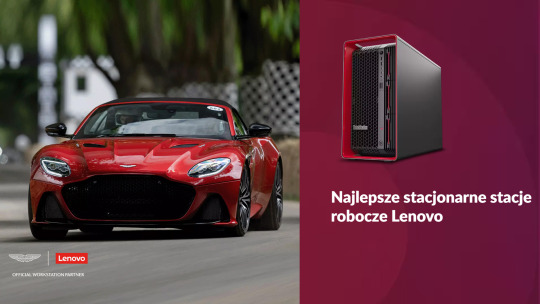
W celu stworzenia tych wyjątkowych stacji roboczych, Lenovo podjęło współpracę z marką Aston Martin – znanym i uznawanym w świecie motoryzacji producentem luksusowych samochodów sportowych. Owocem tej kolaboracji jest nowa obudowa dla serii P. Podobnie jak przy projektowaniu pojazdów, Aston Martin dołożył wszelkich starań, aby ikoniczny styl marki Lenovo, charakteryzujący się wykorzystaniem czerwonego koloru, szedł w parze z osiągami i pozwalał na łatwą rozbudowę systemu w przyszłości. Projektanci obu firm współpracowali na każdym etapie produkcji, tak aby forma nie stała się wrogiem produktywności. W tym celu, stworzono ergonomiczną i praktyczną obudowę, którą obsłużymy bez potrzeby posiadania jakichkolwiek narzędzi.

Trójwymiarowy przedni panel obudowy stacji roboczej jest inspirowany kultowym modelem GT Aston Martin DBS. W tym przypadku projektantom udało się wykorzystać ogromne doświadczenie motoryzacyjnej marki związane z najwyższymi osiągami, w świecie desktopów. Przerobione przegrody powietrza i powiększone otwory wentylacyjne, w zestawieniu z opatentowanym przez Lenovo trójkanałowym systemem chłodzenia, zapewniają niczym nieograniczony przepływ powietrza, który stwarza komponentom stacji roboczych warunki do wytężonej pracy na najwyższych obrotach. Dodatkowo, wszystkie trzy nowe modele mogą pochwalić się innowacyjną, modułową konstrukcją z napędami z dostępem od przodu, co ułatwia serwis i modernizację.
„Nasza trzyletnia współpraca z firmą Lenovo przy projektowaniu nowej obudowy ThinkStation była niesamowitą przygodą” – powiedział Cathal Loughnane, dyrektor Aston Martin Partnerships. „Jako użytkownicy stacji roboczych Lenovo, dostaliśmy wyjątkową okazję stania się częścią projektu, którego owoce pomogą nam przy tworzeniu i rozwoju naszych wysokiej klasy samochodów”.

Lenovo ThinkStation PX: najlepszy komputer stacjonarny, nie tylko do centrum danych
Lenovo ThinkStation PX to flagowa stacja robocza w ofercie marki. Dzięki możliwościom rozszerzenia i obsłudze większej, niż kiedykolwiek wcześniej liczby rdzeni, jest ona idealnym wyborem dla klientów skupionych na ekstremalnych osiągach. Zoptymalizowana do pracy w standardowej szafie serwerowej, stacja ThinkStation PX oferuje elastyczność potrzebną zarówno w środowiskach biurowych, jak i centrach danych.
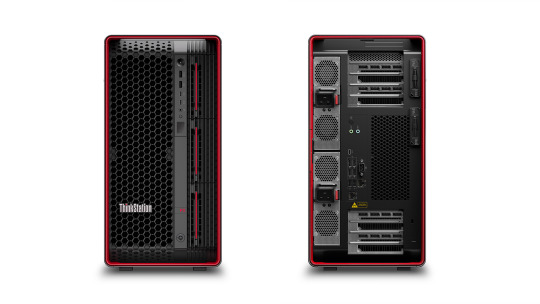
Ta wszechstronna stacja robocza napędzana jest najnowszymi procesorami Intel® Xeon® Scalable czwartej generacji, które oferują do 120 rdzeni CPU i mogą pochwalić się 53-procentowym wzrostem wydajności w stosunku do poprzedniej generacji . ThinkStation PX oferuje również obsługę do czterech 2-slotowych procesorów graficznych NVIDIA RTX™ 6000 Ada Generation, dzięki czemu użytkownicy mogą zarządzać i wykonywać najbardziej złożone zadania spotykane we współczesnych środowiskach pracy, w tym w działaniach kreatywnych i symulacjach CAE.

Nowa desktopowa stacja robocza, z nawet 4 TB pamięci DDR5 i ultraszybką przepustowością złączy PCIe piątej generacji, zapewnia elastyczność wirtualizacji dla wielu użytkowników w hybrydowych środowiskach pracy – zarówno w centrach danych, jak i klastrach. Urządzenie oferuje wydajny zasilacz 1850 W i opcjonalne wersje z modułami zapasowymi.

Lenovo ThinkStation P7: oszałamiająca moc z jednego gniazda
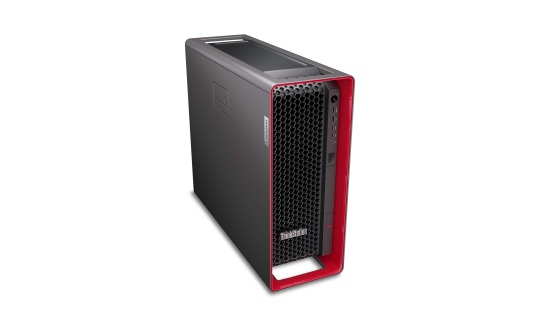
ThinkStation P7 został zaprojektowany tak, aby sprostać najbardziej rygorystycznym wyzwaniom w zakresie wydajności i niezawodności, a które w przeszłości powierzane były głównie serwerom lub zasobom w chmurze. Stacja robocza P7 została także zoptymalizowana pod kątem szaf serwerowych (obudowa 4U) do użytku w środowiskach biurowych i centrach danych.

Dzięki obsłudze nawet trzech 2-slotowych kart graficznych NVIDIA RTX™ 6000 Ada Generation, ThinkStation P7 jest idealnym rozwiązaniem dla twórców treści, architektów, projektantów, inżynierów i naukowców zajmujących się analizą danych, którzy wymagają bezprecedensowej wydajności w zakresie grafiki, wizualizacji, renderingu w czasie rzeczywistym, CAE i AI. Nic, od stylizacji bryły pojazdów, przez analizę obliczeniowej mechaniki płynów, aż po złożoną obróbkę materiałów wideo i rendering, nie stanowi problemu dla ThinkStation P7.
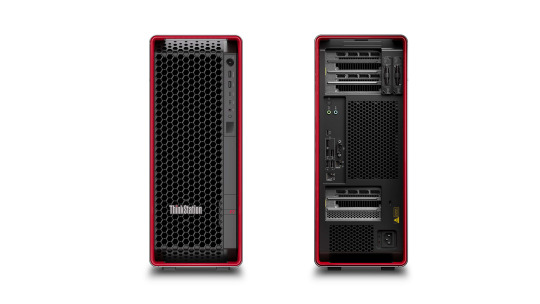
„Jesteśmy podekscytowani możliwością zaoferowania nowej linii procesorów Xeon W, zbudowanych w oparciu o nową, przełomową, architekturę obliczeniową i pakiety ze znacznie większą liczbą rdzeni w celu polepszenia wydajności przy dużych obciążeniach” – powiedział Roger Chandler, wiceprezes CCG i dyrektor generalny zespółu Creator and Workstation Solution w firmie Intel. „Te procesory są zbudowane tak, aby zapewnić profesjonalistom, twórcom, inżynierom i naukowcom zajmującym się procesowaniem danych, moc i stabilność potrzebną do dokonywania nowych odkryć”.
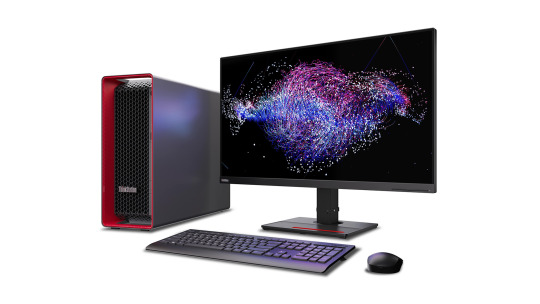
Lenovo ThinkStation P5: Wszechstronność, niezawodność i wydajność na lata

Stacja robocza ThinkStation P5 została zaprojektowana z myślą o wielu branżach. Szczególny nacisk został postawiony na to, aby zaspokoić zapotrzebowanie użytkowników na wyższą wydajność, możliwość rozbudowy i łatwość zarządzania przedsiębiorstwem.
Stacja robocza nowej generacji posiada nowo zaprojektowaną obudowę, najnowsze procesory Intel® Xeon® W, które oferują do 24 rdzeni oraz obsługę nawet dwóch profesjonalnych kart graficznych NVIDIA RTX A6000. Ponadto, szybka pamięć DDR5 i przepustowość PCIe 5. Generacji umożliwiają ekstremalną konfigurowalność, która zaspokaja potrzeby nawet najbardziej wymagających użytkowników.
Lenovo ThinkStation P5 została zoptymalizowana między innymi pod kątem potrzeb architektów, projektantów, inżynierów i twórców treści. Urządzenie sprawdzi się przy wymagających obliczeniowo zadaniach, takich jak np. BIM, skomplikowanych projektach CAD 3D, tworzeniu modeli 3D oraz wizualizacjach geoprzestrzennych i efektach wizualnych.

„NVIDIA oferuje najbardziej wydajne na świecie karty graficzne dla stacji roboczych typu desktop”, powiedział Bob Pette, wiceprezes działu Professional Visualization w firmie NVIDIA. „Znajdują się one we wszystkich trzech nowych stacjach roboczych Lenovo z serii ThinkStation. To właśnie one pozwalają naukowcom, inżynierom i innym profesjonalistom na pracę z ogromnymi bazami danych, szybką implementację innowacji, usprawnianie procesów AI i obsługę intensywnych cykli obliczeniowych, które mają wpływ na rozwój naszego świata”.

Stacje robocze ThinkStation PX, P7 oraz P5 zostały zaprojektowane do pracy w najbardziej wymagających, profesjonalnych środowiskach IT i zapewniają niezbędne funkcje oraz zabezpieczenia wymagane na poziomie korporacyjnym. Rygorystyczne standardy i testy Lenovo, ThinkStation Diagnostics 2.0, wsparcie ThinkShield, rozszerzenie do Premier Support i trzyletnia gwarancja zapewniają spokój niezbędny do pewnej i bezpiecznej pracy.
Trzy nowe stacje robocze dostępne będą od maja 2023 roku. Ceny i dostępność w Polsce podamy wkrótce. Aby dowiedzieć się więcej o najnowszych produktach marki Lenovo w kategorii stacji roboczych, wejdź na stronę: www.lenovo.com/thinkstations

#lenovo#thinkstation#PX#P5#P7#NVIDIA#Intel#Technet Media#Marcin Wójcik#computers#technology#solutions#workstation
14 notes
·
View notes
Text
2 notes
·
View notes
Text
I'm curious.
This website seems to be the type of demographic that would favor AMD over NVIDIA, but let's put that to the test:
To those of you who have/use desktop:
2 notes
·
View notes
Link
“Intel technology has created the world’s first real-time deepfake detection software to root out this most-sophisticated of impersonation technologies.
The software uses tiny changes in image pixelation related to the movement of blood through human veins to detect whether a recorded video is real or fake with 96% accuracy.
Called FakeCatcher, it’s the first program that can catch deepfakes in real time, as most other detection apps require uploading videos for analysis, then waiting hours for results. They tend to need large data sets for deep learning programs to pour over.
Refreshingly, Ilke Demir, senior staff research scientist in Intel Labs opted for a more organic approach; one that also increases efficiency, as it’s capable of monitoring 72 video streams at once.
“FakeCatcher is the first approach that is telling us why we are real, why we are authentic,” said Demir. “It’s like a watermark of being human.”” -via Good News Network, 11/28/22
7 notes
·
View notes
Text

Thats not my purse.
7 notes
·
View notes